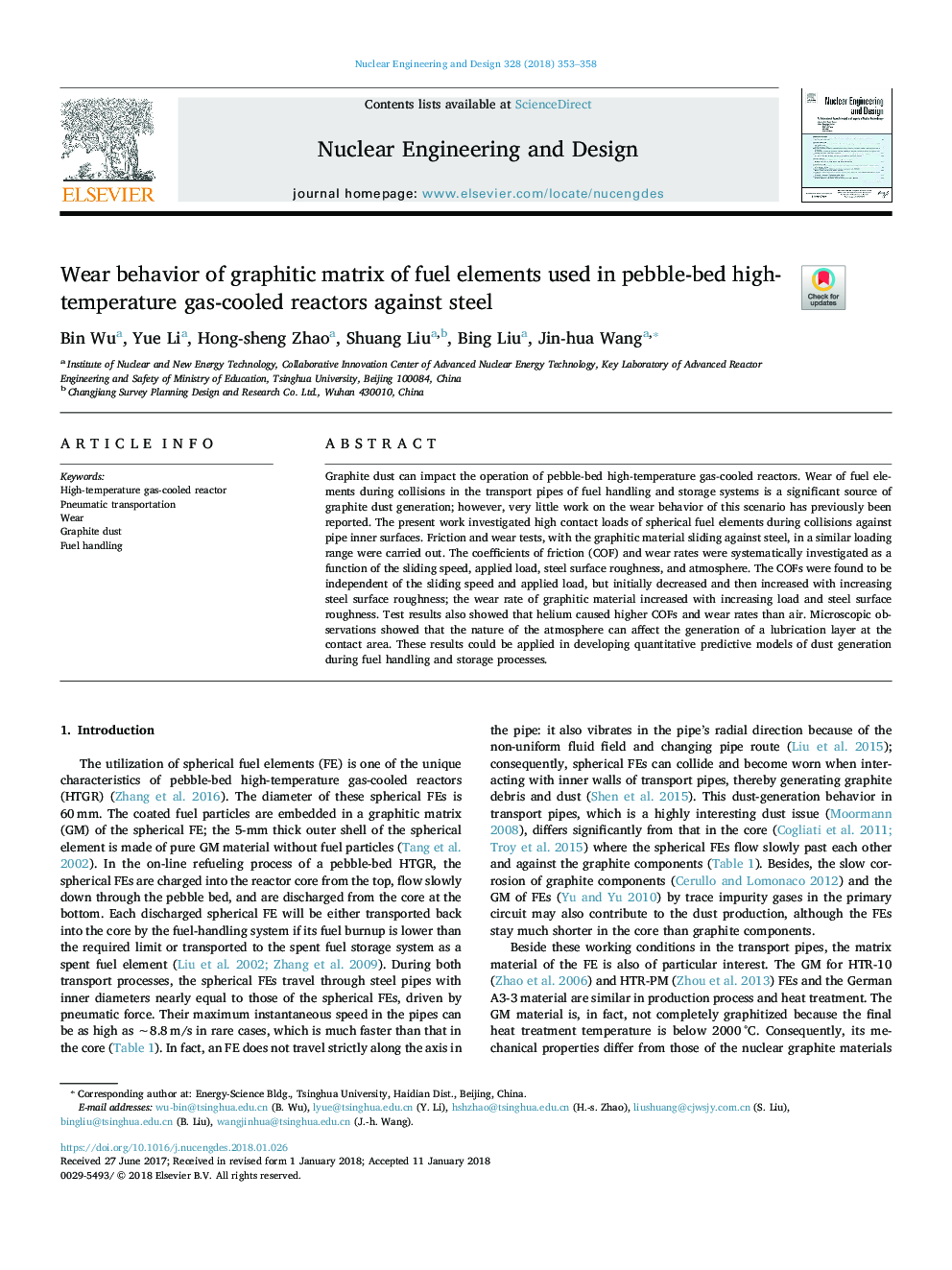| Article ID | Journal | Published Year | Pages | File Type |
|---|---|---|---|---|
| 6759403 | Nuclear Engineering and Design | 2018 | 6 Pages |
Abstract
Graphite dust can impact the operation of pebble-bed high-temperature gas-cooled reactors. Wear of fuel elements during collisions in the transport pipes of fuel handling and storage systems is a significant source of graphite dust generation; however, very little work on the wear behavior of this scenario has previously been reported. The present work investigated high contact loads of spherical fuel elements during collisions against pipe inner surfaces. Friction and wear tests, with the graphitic material sliding against steel, in a similar loading range were carried out. The coefficients of friction (COF) and wear rates were systematically investigated as a function of the sliding speed, applied load, steel surface roughness, and atmosphere. The COFs were found to be independent of the sliding speed and applied load, but initially decreased and then increased with increasing steel surface roughness; the wear rate of graphitic material increased with increasing load and steel surface roughness. Test results also showed that helium caused higher COFs and wear rates than air. Microscopic observations showed that the nature of the atmosphere can affect the generation of a lubrication layer at the contact area. These results could be applied in developing quantitative predictive models of dust generation during fuel handling and storage processes.
Related Topics
Physical Sciences and Engineering
Energy
Energy Engineering and Power Technology
Authors
Bin Wu, Yue Li, Hong-sheng Zhao, Shuang Liu, Bing Liu, Jin-hua Wang,
